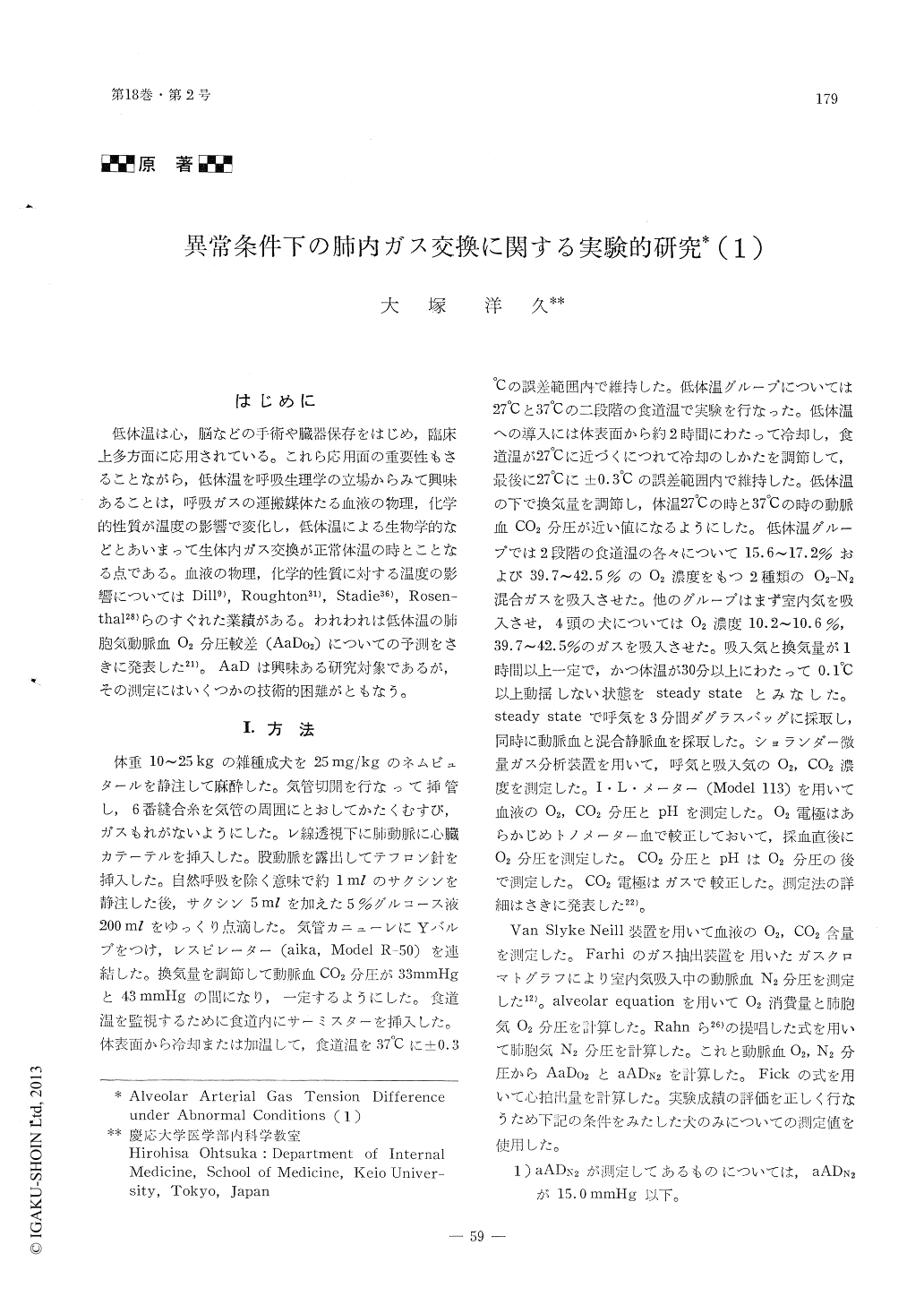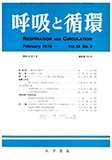Japanese
English
- 有料閲覧
- Abstract 文献概要
- 1ページ目 Look Inside
はじめに
低体温は心,脳などの手術や臓器保存をはじめ,臨床上多方面に応用されている。これら応用面の重要性もさることながら,低体温を呼吸生理学の立場からみて興味あることは,呼吸ガスの運搬媒体たる血液の物理,化学的性質が温度の影響で変化し,低体温による生物学的などとあいまって生体内ガス交換が正常体温の時とことなる点である。血液の物理,化学的性質に対する温度の影響についてはDill9),Roughton31),Stadie36),Rosen—thal28)らのすぐれた業績がある。われわれは低体温の肺胞気動脈血O2分圧較差(AaDo2)についての予測をさきに発表した21)。AaDは興味ある研究対象であるが,その測定にはいくつかの技術的困難がともなう。
Fifteen anesthetized dogs were artificially ventilated with oxygen-nitrogen mixtures. The arterial carbon dioxide was maintained con-stant between 33 to 43mmHg. The oesophageal temperature was monitored to maintain in at37±0.3 ℃. After completing the control measurements at the core tempraure of 37±0.3 ℃, the animals' body temperature was brought down by the surface cooling method to repeat the same analytical procedures at the lower body temperature. The measure-ments were conducted on either body tem-perature, when the animals were breathing two different concentrations of oxygen of ap-proxymately 16.6 percent and 40.7 percent. The arterial carbon dioxyde tension was kept unchanged through the series of experiments.
The alveolar arterial oxygen tension dif-ference measured on 5 dogs may be summariz-ed as following. At body temperature of 37.0℃, alveolar arterial oxygen tension dif-ference was 7.3±0.6 mmHg when breathing 16.6 percent oxygen, while that was 22.6±6.3 mmHg when breathing 40.7 percent oxygen. On the lower body temperature of approxy-mately 27℃ alveolar arterial oxygen tension difference was 15.1±2.4 mmHg upon breath-ing 16.6 percent oxygen, while that was 18.6 ±2.9 mmHg upon 40.7 percent oxygen. Alveo-lar arterial oxygen tension difference on the lower body temperature was significantly lar-ger than that obtained on the normal body temperature.

Copyright © 1970, Igaku-Shoin Ltd. All rights reserved.


